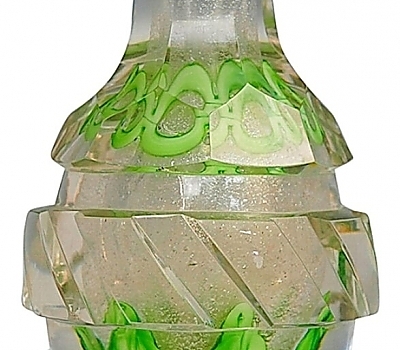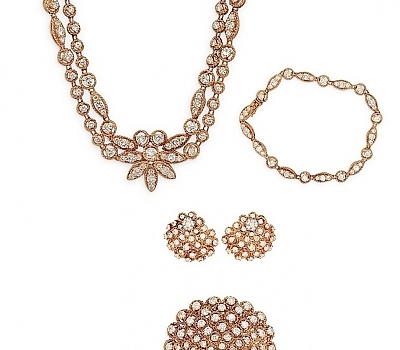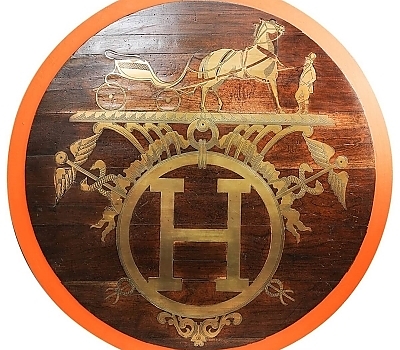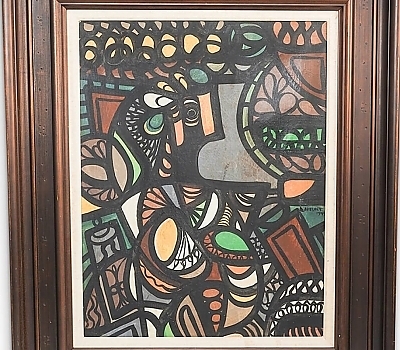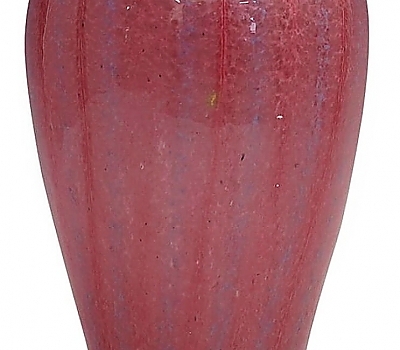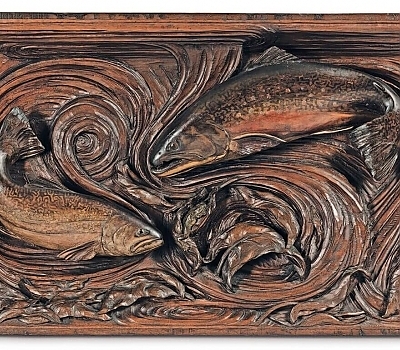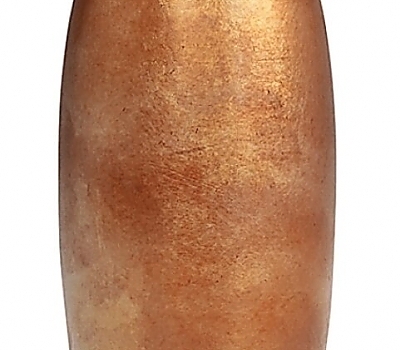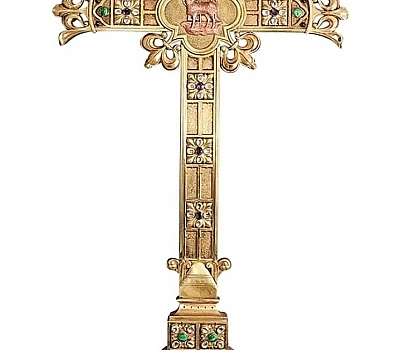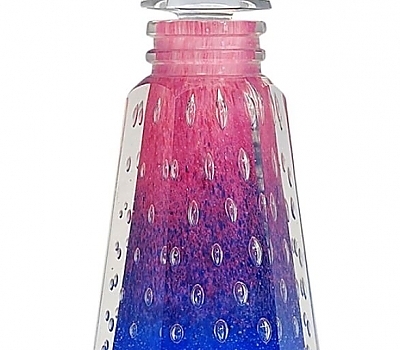By using our website, you agree to the use of cookies as described in our Cookie Policy
Objects Of Desire: Akiba Sells The Marvelous Collection Of Mr & Mrs Shovers
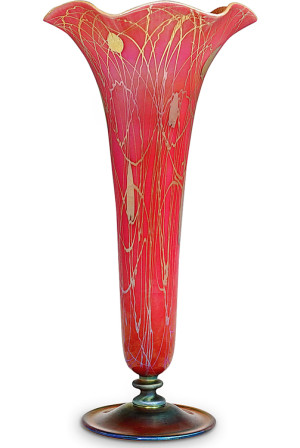
The top lot in the Alan and Susan Shovers collection of rare Steuben glass was this gold ruby footed floriform vase, circa 1910-15, that sold for $56,250 against a $1/5,000 estimate. Decorated with gold aurene leaf and random vine decorations, iridized lead glass with applied ornaments, the vase was marked “547 Aurene” and stood 12¼ inches high.
Review by W.A. Demers, Photos Courtesy Akiba Antiques
DANIA BEACH, FLA. – The collection of Alan and Susan Shovers, one of the rarest selections of Steuben glass available, came up for bid on July 29 at Akiba Antiques. The sale totaled $850,000, attracting 31,000 approved registered bidder across three online platforms, with 38 different telephone bidders. “It’s the most we’ve ever had!” said Alexander Anapolsky, the firm’s co-owner. “We had to get five more people to come in and assist with telephone bidding, including my wife.” Sell-through rate was 92 percent.
The Shoverses, both experts in the field, together authored the book Objects of Desire: The Art of Frederick Carder, which provides insight into the complex techniques and creative spirit of a master craftsman. Seen on page 37 of that book was the sale’s top lot, a Steuben gold ruby footed floriform vase, circa 1910-15, that sold for $56,250 against a $1/5,000 estimate. Decorated with gold aurene leaf and random vine decorations, iridized lead glass with applied ornaments, the vase was marked “547 Aurene” and stood 12¼ inches high. It sold to another Steuben collector in Indiana.
The couple built their collection over nearly two decades, eventually acquiring more than 400 pieces. It took “luck, timing and their relationships with dealers and collectors willing to part with a piece or two of their prized collections,” the Shoverses said.
An example of Frederick Carder’s “Tiffany Blue,” this rare Steuben iridized sapphire blue vase was taken by 27 bids to $31,250 from a low $2,000 estimate. Circa early 1900s, the vase’s iridized sapphire blue over flint white was decorated with gold aurene leaf-and-vine and an intarsia collar.
The Shovers collection was a diverse compendium of the work of Frederick Carder, the English artist behind Steuben. Akiba Antiques Gallery owners Anapolsky and Jonathan Akiba personally packed, picked and coordinated the consignment of the Shovers collection. “The collection was acquired by chance,” said Anapolsky. “We met The Shoverses because they purchased something in our auction. Alan and Susan came into our gallery on Saturday to pick up their winnings. After speaking with them for a little while, we understood that their Steuben collection was one-of-kind and world-class. Two days later, Jon and I were on our way to Evansville, Ind., to acquire it.”
The sale was full of rare Steuben patterns, glass pieces signed by Carder and was further complemented by jewelry, art and antiques. Not surprisingly, the Steuben rarities dominated the top ranks of the sale’s results.
A rare Steuben iridized sapphire blue vase was taken by 27 bids to $31,250 from a low $2,000 estimate. Circa early 1900s, the vase’s iridized sapphire blue over flint white was decorated with gold aurene leaf-and-vine and an intarsia collar. It was an example of what is probably Carder’s “Tiffany Blue,” its shape #2468 as illustrated on page 267 of Paul V. Gardner’s book, The Glass of Frederick Carder. Standing 7½ inches high, the vase had been acquired by the couple in April 2006 at the spring glass auction in Cincinnati, Ohio.
A slender, rare Steuben calcite with gold aurene vase made about 1908, with brown decoration on calcite, was embellished with gold aurene leaf and pulled peacock feather decoration and gold lining. It sold for $22,500.
Fetching $22,500 was a slender rare Steuben calcite with gold aurene vase made about 1908. With brown decoration on calcite, the piece was embellished with gold aurene leaf and pulled peacock feather decoration and gold lining. Carder developed aurene glass in 1904 when he sprayed glass items with lead chloride and reheated them to achieve a distinct shine.
Delicate and delightful, a Steuben blue aurene Jack-in-the Pulpit vase, circa 1905-10, sold for $20,000. The Shoverses purchased the piece in 2007 from Steuben expert and author Thomas P. Dimitroff of Corning, N.Y., who illustrated it on page 121 of his book Frederick Carder and Steuben Glass.
A figural centerpiece bowl, Steuben’s “Diving Lady,” was bid to $16,250. This rare piece dates back to 1926 and features three frosted nude figures supporting a bright yellow bowl. The centerpiece recalls the early days of Steuben Glass Works, which started in 1903 when Thomas G. Hawkes partnered with Art Nouveau glassmaker Frederick Carder. Steuben phased out all colored glass from its products only a few years after it was made. It may have been one of only three known examples, one of which is the collection of the Rockwell Museum.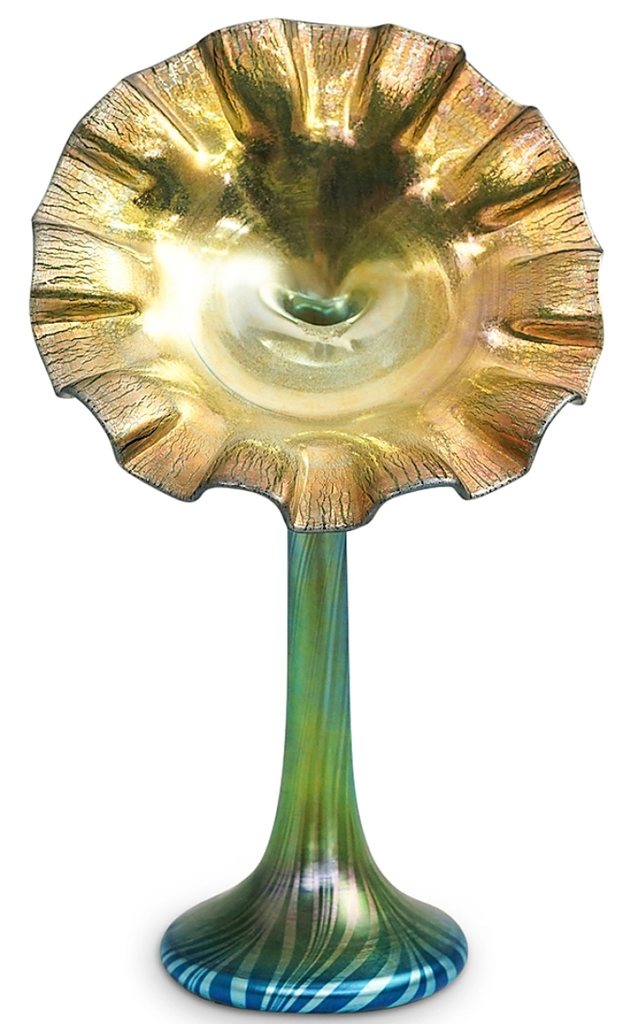
Steuben blue aurene Jack-in-the Pulpit vase, circa 1905-10, sold for $20,000.
A rare Frederick Carder black intarsia vase, circa 1929, earned $13,750. Pictured on pages 101-102 of the Shovers book, it is nearly identical to an example in the collection of the Museum of Fine Arts, Boston. During the 1920s, Carder introduced his most prized innovation, intarsia glass, which was extremely difficult to produce, incorporating a delicate trellis or floral pattern of colored glass between two clear crystal layers. Impractical for commercial purposes, Carder reportedly pursued the technique for his own enjoyment. He is believed to have created roughly 100 pieces, many rendered in blue, black and amethyst tones.
Two Steuben designs each fetched $11,875. One was a blue intarsia vase with blue foot, circa 1930, blown by master Johnny Jansson, gaffer at the Steuben Glass Works. The other was a heavy cut glass Cintra paperweight-style cologne bottle, circa 1926, with internal controlled Cintra decoration of two-toned green leaves and circles over a matrix of fine bubbles. It was also acquired from Dimitroff who indicated that he had only seen two others, in the collections of the Corning Museum and the Rockwell Museum. A total of $11,875 was posted for another rare Steuben Cintra paperweight-style cologne bottle, circa 1927-31, this one featuring pink to blue shaded controlled Cintra internal decoration and controlled bubbles. Clear cased, deep cut lead glass and with a clear stopper, factory records call this a tall cologne and it originally retailed at $37.50.
In addition to the paperweight-style cologne bottles, Steuben glass collectors could pursue variations of a pink and blue Cintra vase, circa 1917, finished with a black rim or a blue example. Both commanded $11,875, while a brown aurene vase cased over translucent white with crisscrossed brown and white threading rubbed into intarsia decoration and a gold aurene collar changed hands for $11,250.
Perhaps one of only three known examples, a figural centerpiece bowl, Steuben’s “Diving Lady,” circa 1926, was bid to $16,250. Three frosted nude figures support a bright yellow bowl
Beyond Steuben glass, the auction offered a selection of jewelry, place settings and fine and decorative artworks. These included Cuban artist Amelia Peláez’s (1896-1968) “Womans,” an oil painting from 1944, that earned $8,750. The work features an array of patterns and shapes executed in vibrant hues depicting a figure, signed “A. Pelaez 1944,” 25 by 19 inches.
An antique Gorham altar cross with gilt brass and jewel accents took $11,875 a vintage European diamond and gold four-piece jewelry set brought $10,625; a salvaged antique Hermès store sign with gilt brass logo found a buyer at $9,375, as did a pair of antique French cachepots, late Nineteenth to Twentieth Century, featuring tessellated malachite body with gold gilded bronze top, bottom and handles finished with four lions feet holding up each planter.
“Overall, this was an incredible sale,” concluded Anapolsky. “Having the opportunity to sell one of the world’s largest Steuben glass collections has opened the doors for many new consignments.
Prices given include the buyer’s premium as stated by the auction house. Akiba’s next auction is August 17. For information, www.akibaantiques.com or 305-632-5563.
‹ Back

